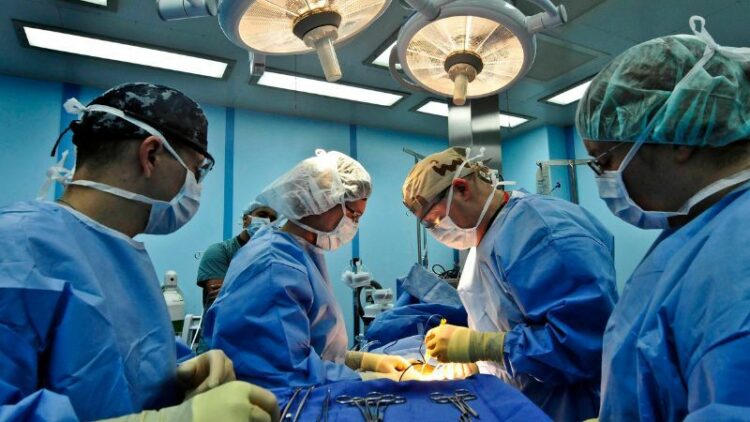Pleas and cases are pending at the apex court demanding recognition of same-sex marriages in India. Notably, the prosecution believes that this is a more Westernised idea and will never fit the Indian realm. Transgenders and their whole activism around the world might look fascinating to the woke people out there and hence this article brings the complications that may arise at a time to change of sex.
The idea of biological male and biological female brings to the table surgeries and methods like Vagainal rejuvenation surgery or vaginoplasty where people opt for a change of sex through a medical operation.
As per a research paper published in 2016 by Negenborn and others, Although vaginal reconstruction has a positive influence on the quality of life in transgender women, physicians and patients need to be aware of serious complications that might arise.
The paper also includes the death of one of the participants in the linchpin Dutch study (change of sex theories) upon which the entire child sex change experiment is based indicates that puberty suppression was to blame for the young person’s death.
Notably, researchers from time to time have revealed that the Dutch research suffers from profound, previously unrecognised problems. These problems range from erroneously concluding that gender dysphoria disappeared as a result of “gender-affirmative treatment,” to reporting only the best-case scenario outcomes and failing to properly examine the risks, despite the fact that a significant proportion of the treated sample experienced adverse effects.
The manuscript by Negenborn begins by saying that the “absence of a functional vagina has a negative effect on the (sexual) quality of life of (transgender) women” explains that multiple surgical procedures have been described for vaginal “reconstruction” in these patients.
“Transgender women with early-onset gender dysphoria, treated with puberty suppressing hormones, report fewer behavioural and emotional problems and an improvement of general functioning,” readers are assured at this point.
Within 24 hours of having a vaginoplasty, the patient started showing major complications. Necrotising fasciitis was confirmed in the days after the surgery.
Despite large doses of intravenous antibiotics and repeated surgical debridement (the removal of dead or infected tissue), the patient went into multiple organ failure and died.
Watch his condition before the organ failure here
Vaginoplasty surgery is a complex and invasive procedure, as it involves creating a neovagina from existing tissue and skin.
The surgery typically involves several steps, including removing the penis and testicles, creating a vaginal canal and repositioning the urethra.
Additionally, vaginoplasty surgery carries risks and potential complications, including bleeding, infection, scarring, loss of sensation and complications related to anaesthesia.
Some argue that these procedures can alleviate the distress and psychological pain many young transgender people with gender dysphoria experience. Recovery time can also be lengthy, and follow-up care is often required to monitor healing and address any issues that may arise.
It’s important to note that vaginoplasty surgery is not the right choice for anyone who identifies as transgender. It should only be considered carefully in consultation with medical professionals who specialise in gender-affirmation surgery.
Dr Michael Biggs, a sociologist and author of the article titled “The Dutch Protocol for Juvenile Transsexuals: Origins and Evidence”, who played a key role in exposing the scandal that unfolded at the soon-to-be-closed Tavistock gender clinic in London, spoke of this tragic case in a recent interview on the Wider Lens podcast.
Biggs noted that while early puberty suppression for boys who experience childhood-onset gender dysphoria has the advantage of creating a more feminine appearance in adulthood, the major disadvantage is the penis remains that of a small boy making vaginoplasty much riskier.
“Instead of using the penile tissue, they will have to use some of your colon,” explained Biggs. “Now of course, that means opening up your intestines, and that’s much much much riskier because then you have a different site and of course, intestines are also messy.”
Notably, On March 13, 2008, a trans woman 38-year-old Garcia died on the operating room table after a vaginal rejuvenation surgery and liposuction.
What is vaginal rejuvenation surgery?
During the procedure, surgeons cut away tissue both inside and outside ostensibly to make the patient look and feel younger. It’s a fringe surgery done by so few doctors nationwide that The American Society for Aesthetic Plastic Surgery does not even recognise it as a standard cosmetic procedure. But Hills Surgical Center is a fringe cosmetic surgery operation, the kind of place that has a MySpace page where it posts Girls Gone Wild-style videos of parties it has sponsored.
Jazz Jennings, star of the reality TV show I Am Jazz ( documents the medical transition of trans-identified male teen Jazz Jennings), faced a similar issue when it came time for genital surgery. Jennings was an extremely gender-nonconforming child who would almost certainly have grown up to be a gay man but was instead transitioned at a very young age.
Jennings’s puberty was also blocked very early, meaning standard vaginoplasty was not possible. Jennings required three corrective surgeries, still struggles in the dating world, and has never experienced orgasm.
Dr Marci Bowers, Jennings’s surgeon and president of the World Professional Association for Transgender Health, is on record saying that all boys who have their puberty blocked early will never experience orgasm, which surely casts doubt on the Dutch researcher’s conclusion that “vaginal reconstruction has a positive influence on the quality of life in (transgender) women.”
Vaginal reconstruction is essential for the psychological well-being of biological women with dysfunctional vagina and male-to-female transgender women. However, the preferred method for vagina reconstruction with respect to functional as well as aesthetic outcomes is debated. Regarding intestinal vaginoplasty, despite the asserted advantages, the need for intestinal surgery and subsequent risk of diversion colitis are often-mentioned concerns. The outcomes of vaginal reconstructive surgery need to be appraised to improve understanding of the pros and cons.
Twenty-one studies on intestinal vaginoplasty were included (including 894 patients in total). All studies had a retrospective design and were of low quality. Prevalence and severity of procedure-related complications were low. The main postoperative complication was intraoral stenosis, necessitating surgical correction in 4.1 per cent of sigmoid-derived and 1.2 per cent of ileum-derived vaginoplasties. Neither diversion colitis nor cancer was reported. The sexual satisfaction rate was high, but standardised questionnaires were rarely used. Quality of life was not reported.


















Comments